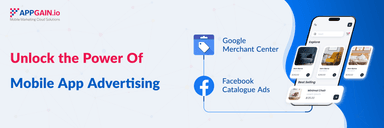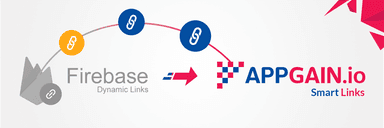Unleashing The Power of Mobile Deep Linking : Enhancing Usability and Conversion Rate Optimization
- Introduction
- Understanding Mobile Deep Linking
- Importance of Mobile Deep Linking for Usability
- Enhancing Conversion Rate Optimization with Mobile Deep Linking
- Inspiring Examples of Successful Mobile Deep Linking Implementation
- Conclusion
In the mobile app ecosystem, deep linking has emerged as a powerful tool for improving usability and driving higher conversion rates. Mobile deep linking enables seamless and contextually relevant user experiences by directing users to specific content or features within an app,
even if the app is not currently installed on their device. In this e-book, we will explore the concept of mobile deep linking, its importance for usability, and how it can significantly enhance conversion rate optimization.
2. Understanding Mobile Deep Linking
Mobile deep linking is the practice of embedding links that direct users to specific locations or content within a mobile app. Unlike traditional web links, deep links can open a particular screen or perform a specific action within an app,
providing a frictionless user experience. Deep links are typically implemented using Uniform Resource Identifiers (URIs) or Application Links, which can be triggered from various sources such as websites, emails, SMS, push notifications, and other apps.
3. Importance of Mobile Deep Linking for Usability
-
Seamlessness Across Platforms
Mobile deep linking allows users to seamlessly transition from web to app or from one app to another. It eliminates the need for users to manually search for content or perform repetitive actions, enhancing usability and overall user satisfaction.
-
Personalized User Journeys
Deep links enable personalized and contextual user experiences. By directing users to specific content or features based on their previous interactions, preferences, or marketing campaigns, deep linking enhances engagement and relevance.
-
Simplified Onboarding and User Acquisition
Deep links can be used to guide new users through the onboarding process, ensuring they land on the appropriate screens to create accounts, set preferences, or complete initial interactions. This streamlined onboarding experience improves user acquisition and conversion rates.
4. Enhancing Conversion Rate Optimization with Mobile Deep Linking
-
Re-Engagement and Retargeting
Deep links can be used to re-engage dormant users or retarget users who have shown interest but have not completed a desired action.
By directing them to specific screens or offering personalized incentives, deep linking can significantly boost conversion rates.
-
Abandoned Cart Recovery
Deep links can help recover abandoned carts by redirecting users directly to their cart or specific product pages with pre-populated information. This simplifies the checkout process, reduces friction, and increases the likelihood of conversions.
-
Promotional Campaigns
Deep links enable precise tracking and measurement of marketing campaign performance. By creating deep links associated with specific campaigns, businesses can analyze the effectiveness of their marketing efforts, optimize targeting, and drive higher conversion rates.
Read here, Firing To AppGain For Seamless Deep Linkingebase Dynamic
5. Inspiring Examples of Successful Mobile Deep Linking Implementation
-
Airbnb
Airbnb utilizes mobile deep linking to provide a seamless transition for users from their website to the app when booking accommodations.
This ensures a consistent and frictionless user experience, resulting in increased conversion rates and improved usability.
-
Starbucks
The Starbucks mobile app employs deep links to guide users to personalized offers, rewards, and in-app ordering. By leveraging deep links within the email and push notifications, Starbucks enhances engagement and encourages conversions.
-
Spotify
Spotify uses deep linking to smoothly transition from external links to its app. Whether it’s a link shared on social media or embedded in an email, users are seamlessly directed to the relevant artist, playlist, or song within the app, maximizing usability and conversion opportunities.
6. Conclusion
Mobile deep linking plays a vital role in improving usability and conversion rate optimization for mobile apps. By implementing deep linking strategies, businesses can provide seamless experiences, personalize user journeys, and enhance conversion opportunities. Drawing inspiration from successful examples like Airbnb, Starbucks, and Spotify, you can harness the power of mobile deep linking to optimize your app’s usability and drive higher conversion rates.








